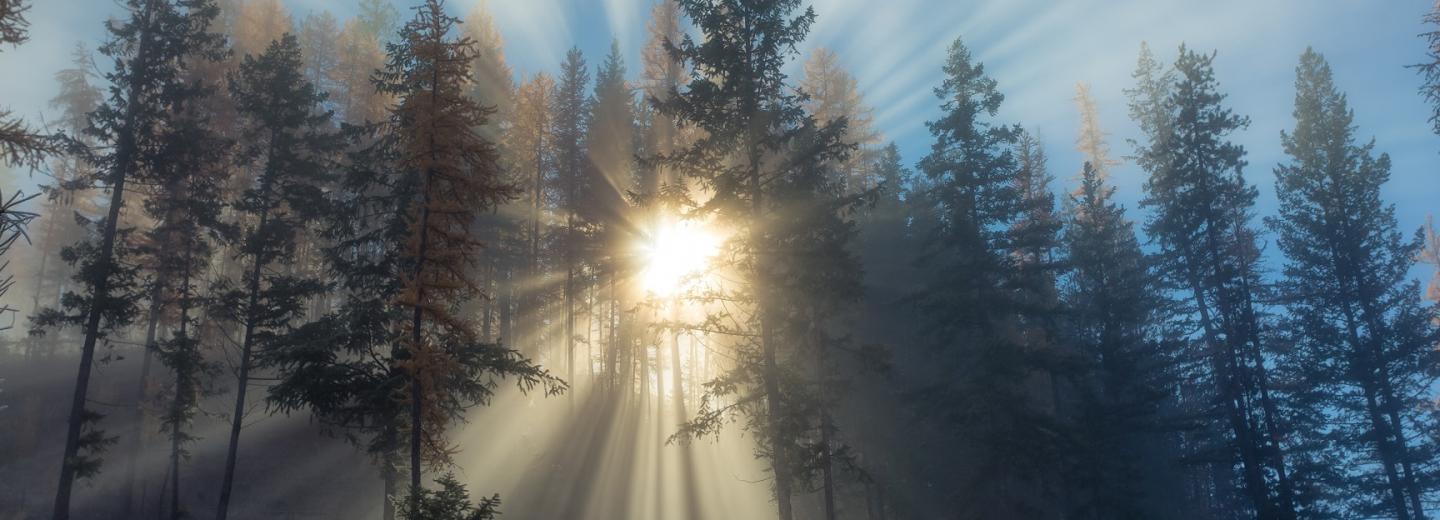A little less then 20% of the park's surface is covered by forests, and they are very important, not only because they provide shelter to a large number of animal species but also because, from an ecological point of view, they represent a situation of balance that vegetation has a natural tendency towards. Furthermore, in many cases they make up the only natural defence system against the dangers of natural hydro-geological events (landslides, avalanches, flooding).
There are different types of forests that can be found in the park, and are usually divided into two main groups: deciduous and coniferous forests.
Deciduous forests
The beech forests (Fagus sylvatica), typical of the Piedmont side of the park and completely absent on the dryer Valle d'Aosta side. The beech forms thick forests; its leaves, which take a long time to decompose, form a thick layer which impedes many other plants and trees from developing, just as the thick foliage lets very little light through during the summer months. The undergrowth of the beech forest is therefore richer in species in spring when the leaves are not yet fully developed (Anemone nemorosa, Luzula nivea).
Gully forests of maples (Acer pseudoplatanus) and gully forests of lime trees (Tiliaplatyphyllos). They're present on the territory in the northern slope and at lower altitudes, where moisture conditions are better.
The chestnut groves (Castanea sativa) in most cases, have been effected by humans, who for a long time "cultivated" them, both for their wood and their fruit, grafting them in a way which regulated their growth. The chestnut tree prefers areas with a relatively mild winter climate, and rarely grows above 1000 m. Inside the park the major chestnut forests are all on the Piedmont side.
The pioneer or invading woodlands include several heterogeneous tree formations relatively recently developed, mainly on sunny slopes, once destined to agriculture and farming. The species that best characterize these formations are the Aspen, birch, Hazel.
Coniferous forests
Scots pine groves (Pinus sylvestris). This tree easily tolerates the dryness of the climate and the shortage of nourishing elements in the soil but is unable to compete with other trees, and so forms open forests on poor, rocky soil with southern exposure. This type of pine is more common on the Valle d'Aosta side of the park.
Spruce forests are dominated by the Norway spruce (Picea abies), often mixed with the larch. The undergrowth is made up of both herbaceous and heath species. These forests are perhaps most common inside the park at the middle range of the sub-alpine level up to an altitude of 1800-2000 m.
Larch and Swiss stone pine forests are "enclosed" forests, which reach the highest altitudes of the western Alps, up to the highest sub-alpine level (2200-2300 m). The Swiss stone pine (Pinus cembra) is the only pine in Italy with needles in groups of five; it is resistant to very low temperatures and can, like the larch, live to an impressive age, sometimes becoming twisted. The undergrowth is mainly made up of heather, rhododendrons and whortleberry.
Larch groves are forests in which the larch (Larix decidua), is dominant. It is the only European conifer that sheds its leaves in autumn. It only forms pure forests in the early stages - otherwise it easily mixes with the spruce and the Swiss stone pine. The undergrowth, if the larch is dominant, contains very few different species; only gramineae are able to grow on the thick layer of pine needles, which decompose very slowly.
